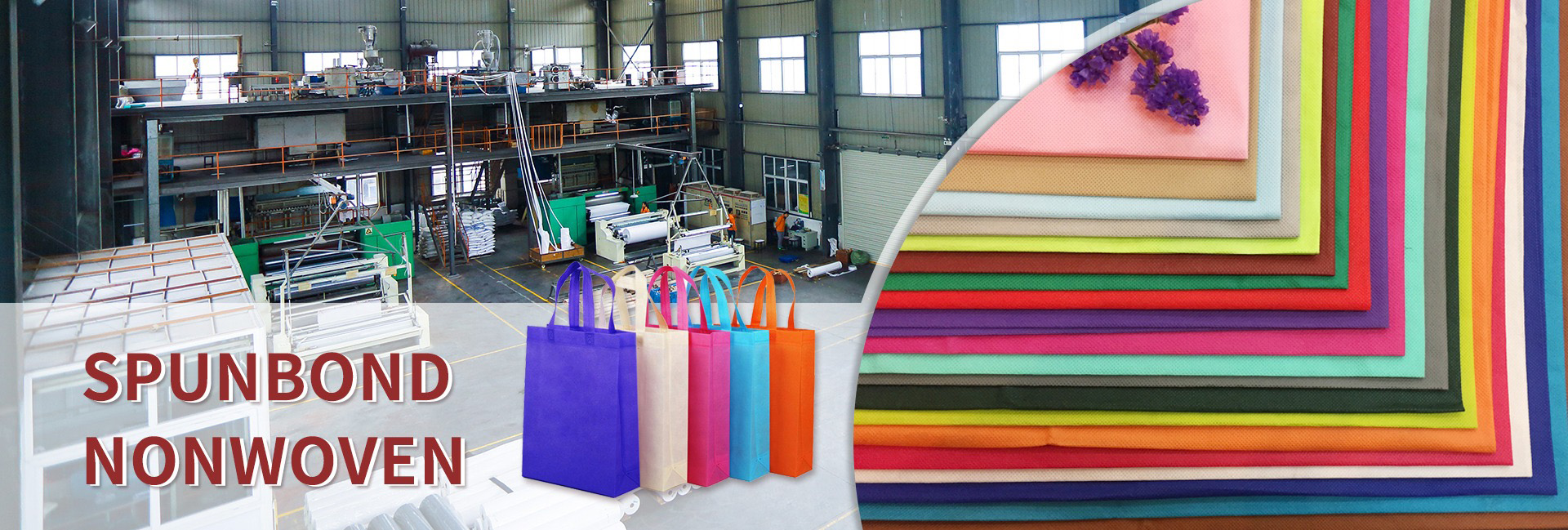-

Non woven Fabric Raw Material —— Properties and Applications of Polypropylene
Properties of polypropylene Polypropylene is a thermoplastic polymer that is polymerized from propylene monomer. It has the following characteristics: 1. Lightweight: Polypropylene has a lower density, usually 0.90-0.91 g/cm ³, and is lighter than water. 2. High strength: Polypropylene has excell...Read more -

Meltblown fabric is very brittle, lacks toughness, and has low tensile strength. What should we do?
The performance of melt blown products mainly refers to their physical and mechanical properties, such as strength, breathability, fiber diameter, etc. Due to the complexity of the melt blown process, there are many influencing factors. Today, the editor will briefly analyze the reasons for the l...Read more -

Analysis of softness of polypropylene melt blown non-woven fabric
The softness of polypropylene melt blown non-woven fabric varies depending on the production process and material, and is usually not very soft. The softness can be improved by adding softeners and improving the fiber structure. Polypropylene melt blown non-woven fabric is a non-woven material ma...Read more -

How to improve the toughness and tensile strength of melt blown fabric?
Meltblown non-woven fabric is a material commonly used in medical supplies such as masks and protective clothing, and its toughness and tensile strength are crucial to the quality of the product. This article will explore how to improve the toughness of meltblown fabrics from the aspects of mater...Read more -

How to improve the melt index of non-woven fabric masterbatch?
Most of the carriers for non-woven fabric masterbatch are polypropylene (PP), which has thermal sensitivity. If you want to improve the melt index of non-woven fabric masterbatch, there are three methods to try. Below, the editor of Jisi will briefly introduce them to you. The simplest method tha...Read more -

Different materials and characteristics of nonwoven fabrics
Polyester nonwoven fabric Polyester non-woven fabric is a non-woven fabric made from chemically treated polyester fibers. It has the characteristics of high strength, good water resistance, flame retardancy, and corrosion resistance. Polyester non-woven fabric has a wide range of applications and...Read more -

What are the materials of nonwoven fabric
Common non-woven fabric materials include acrylic fiber, polyester fiber, nylon fiber, biobased materials, etc. Polypropylene fiber Polypropylene fiber is one of the most common materials in non-woven fabric manufacturing. Due to its low melting point, good waterproofing, and high wear resistance...Read more -

Degradable non-woven fabric – corn fiber hydroentangled nonwoven fabric
Fiber (corn fiber) and polylactic acid fiber are relative to the human body. After testing, the hydroentangled cloth made from corn fiber does not irritate the skin, is beneficial to human health, and has a comfortable feeling. Advantage Polylactic acid fiber hydroentangled fabric has superior pe...Read more -

Non woven fabric manufacturers: leading the industry’s new trend with quality and innovation
In today’s diversified and rapidly developing market, non-woven fabric, as an important environmentally friendly material, is gradually penetrating into every aspect of our lives. As a core force in this field, non-woven fabric manufacturers, with their unique advantages, not only promote t...Read more -

Innovation in Chinese non-woven fabric factories: Developing diverse fiber sources to achieve breakthroughs in visual effects
In recent years, the Liansheng Non woven Fabric Factory located in Guangdong, China, has become a rising star in the non-woven fabric industry with its outstanding innovation capabilities and emphasis on fiber sources. With its own production workshop and dedicated R&D team, the factory activ...Read more -

Innovation is needed for non-woven fabrics in the post pandemic era
So what should we do in the future after the epidemic? I think for such a large factory (with a monthly production capacity of 1000 tons), innovation is still necessary in the future. Actually, it’s quite difficult to innovate non-woven fabrics. Equipment innovation Technological innovation...Read more -

How to make the meltblown fabric reach level 95? Unveiling the principle and application of the “God Assisted” organic fluorine electrode material!
Electrostatic polarization technology The material used as an electret air filter requires excellent dielectric properties, such as high body resistance and surface resistance, high dielectric breakdown strength, low moisture absorption, and air permeability. This type of material is mainly compo...Read more

